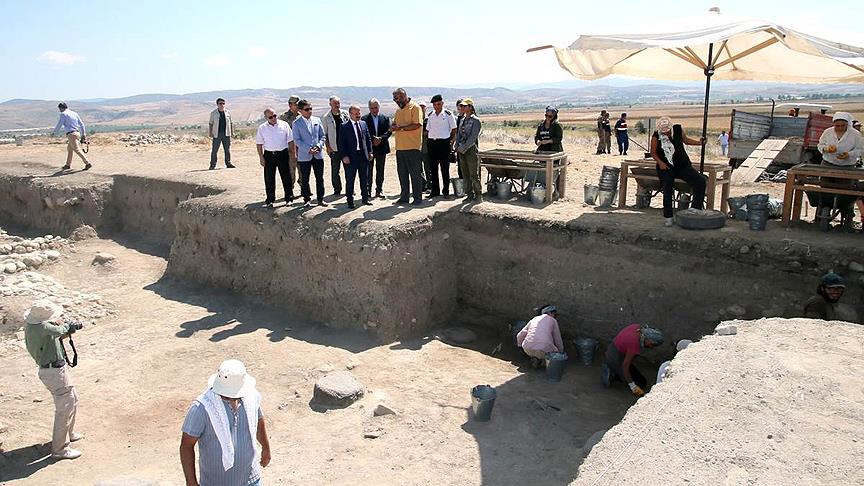türkçe links to original Turkish article
(Anatolian News Agency, 7 September 2018)

Once you turn that shovel you never know what
you'll turn up.
At the ongoing excavation of Oluz Höyük (mound) in
Amasya, archeologists have found a columned reception
and throne room, known as an 'apadana' in old Persian,
dating from the Persian era 2,500 years ago, and a bull
statue from the preceding Hittite period.
The excavation chief, Prof. Dr. Şevket Dönmez of Istanbul
University, said at the site, which is 25 kilometers
southwest of Amasya city, that they have discerned that
the physical cultural remains reflect a significant
architectural change, indicating that Oluz Höyük was
a settlement of an Achaemenid-Persian community
around 450 B.C.
Dr. Dönez explained that "new elements of this city
have begun to emerge. We knew about a road and a
mansion and we have excavated a fire temple. All of
these are 'firsts' in world history. This year an 'apadana'
reception and throne room has begun to appear. We're
at the very beginning but already some of the findings
are very exciting. They reflect the Anatolian Iron Age,
the Anatolian Ancient Period and Persian archeology.
So far, we've have revealed 6 column bases and in a
year or two we will have a better idea of the site plan."
Dig We Must!
"This year we also found a bull statue from the Hittite
period - underneath the Persian city there is a very
large Hittite city that we think is Shanovhitta. This
place was a traditional sacred city. Each civilization
that came here built a sacred temple."

There are 12 academicians, 10 archeologists and 15
students working at the excavation. Dr. Dönmez added
that "before we started we didn't know we would find a
Persian city like this. We didn't anticipate finding a
temple and a reception hall like this. We expected to
excavate a typical Middle Anatolian mound and find
some answers to some of our outstanding questions.
But we encountered a completely different world. The
whole world has begun to follow developments at
Oluz Höyük. After Göbektepe, this place is becoming
a very important center that changes Anatolian religious
history."


Hiç yorum yok:
Yorum Gönder